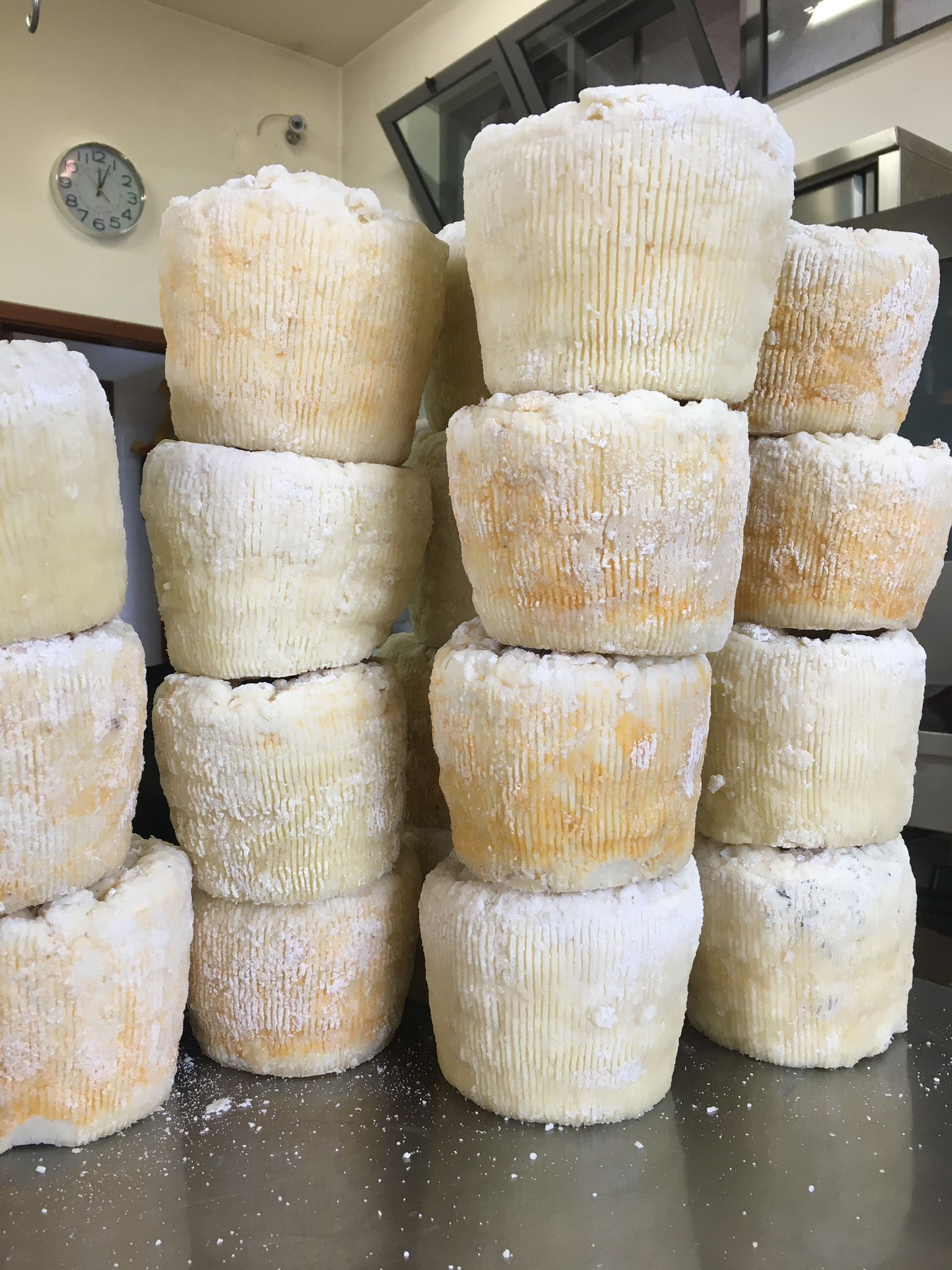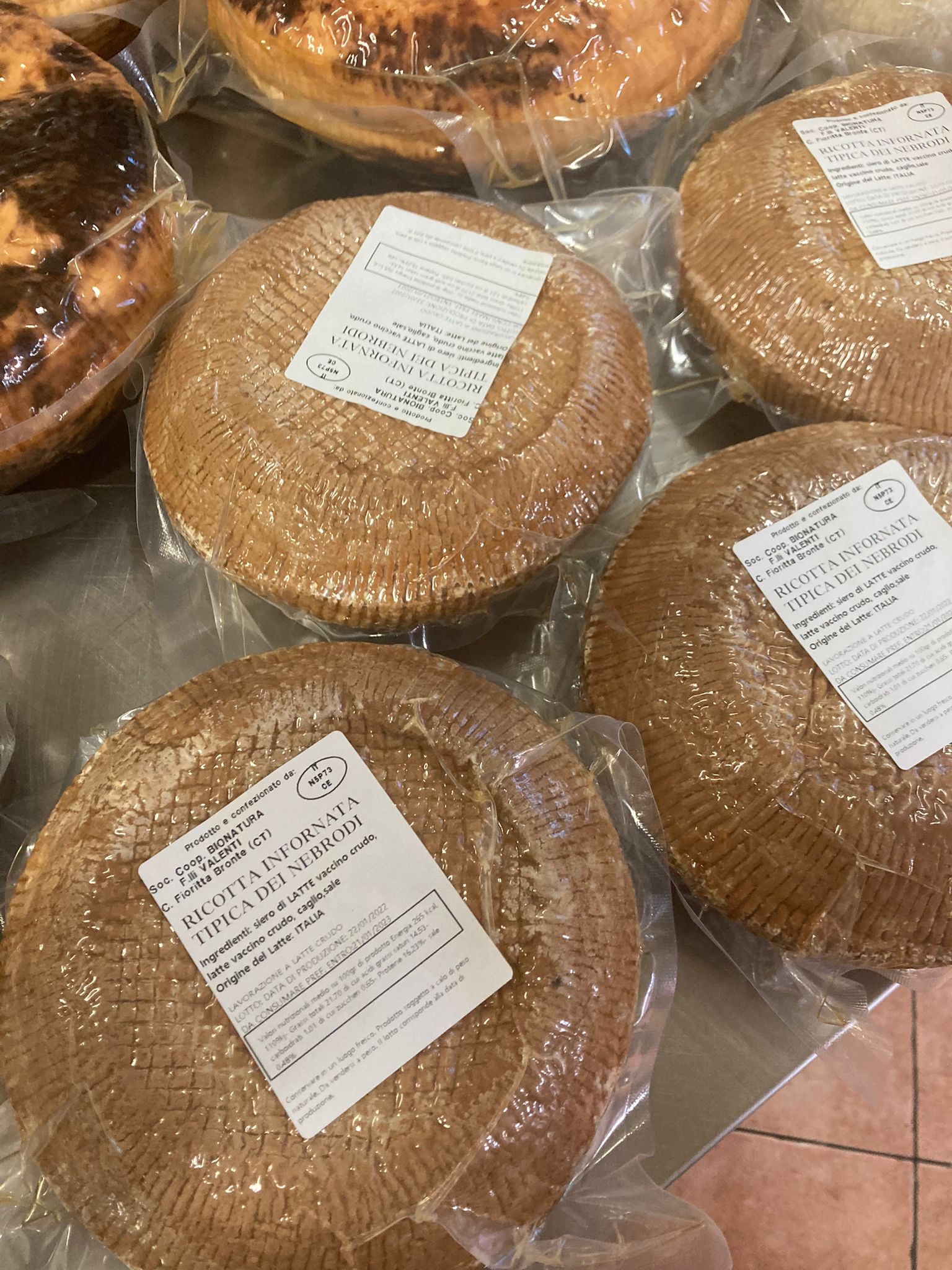Cons. Provola dei Nebrodi D.O.P.
Description
The Bionatura Cooperative Company owns, for various reasons, over 70 hectares of land located in the Nebrodi territory (partly in the Park area) in the "Masseria Fioritta" locality, falling in the valley where the Saracena stream flows, in the area between Poggio Monaco and Serro Candela, in the territory of the Municipality of Bronte (CT). The Nebrodi territory has a very rich vegetation characterized by variegated woods, green high altitude pastures and Mediterranean scrub. A further element is constituted by suggestive humid environments such as lakes and flowing streams that contrast with the more common image of an arid and sunburnt Sicily. The food products of the territory find their maximum expression in the dairy products including canestrato, pecorino, provola and ricotta as traditional products that are strongly linked to the territory of origin, of which they express the most intimate meanings , being, still today, obtained with the milk of mainly native breeds and with processes, in part, still traditional. The company mainly raises cattle, buffaloes, sheep and goats from milk and meat in the wild and semi-wild for the production of different types of typical cheeses, processed by the skilled hands of our cheesemaker.Products

Provola dei Nebrodi D.O.P.
A unique cheese in its characteristics, Provola dei Nebrodi PDO is a stretched curd cheese produced in four different variants: fresh, semi-matured, matured, “puff pastry” and with green lemon. The "Provola dei Nebrodi PDO" cheese is produced with whole raw cow's milk, coming from farms located in the "Nebrodi" area in compliance with specific requirements relating to breeding and the production process in compliance with the production standard provided for by the disciplinary. . Finally, the coagulation of the milk takes place in the wooden vat by adding kid or lamb rennet paste. Salting carried out in brine tending to saturation is continued for a variable time (12-24 hours per kg of cheese) according to the size of the wheels. Once the brine is finished, the provola is immersed for 5-10 minutes in cold water and then hung around the neck, with a cord made of natural fibers, in pairs "pennule" astride a pole and / or supporting axis. The final seasoning takes place in cool and ventilated rooms, especially in the initial phase (30-60 days). The duration of the seasoning depends on the weight of the provolone.
Ricotta salata
Dry ricotta, or ricotta salata, or seasoned ricotta, in Sicilian is a variety of ricotta produced and appreciated in particular in southern Italy . It differs from fresh ricotta for being more "dry" and for a more marked flavor and texture. It is produced by letting the proteins and albumin present in the whey flocculate through their denaturation: the whey is brought to a temperature close to 85 ° C in large hemispherical containers, called "double bottoms", where the whey proteins tend to clump into flakes ( "flocculate") and then come to the surface, to then be collected and inserted into the appropriate fuscelle. Subsequently, the freshly produced ricotta is left to drain for a few days before being salted. Salting is done almost exclusively by hand with coarse sea salt. After aging for a few days (on average from a minimum of 10 to a maximum of 30) the dry ricotta is ready for consumption . A particular variant involves the addition of red chilli, which is inserted directly at the time of harvesting and put into the mold. Dry ricotta with chilli is an ingredient in some typical Calabrian, Apulian and Sicilian dishes, such as Pasta alla Norma. Ricotta salata is used instead of grated cheese . The dry ricotta on the market is mainly produced with sheep's milk whey , but in Sardinia dry ricotta is produced with goat's whey , which has a softer consistency and makes it used as a table product and not for grating.



